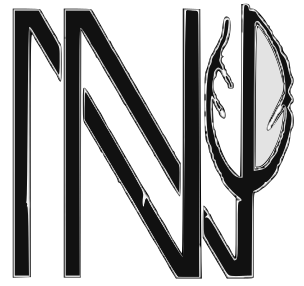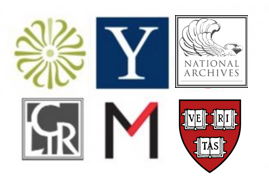FAQs
Contributing Partnership with the Native Northeast Collaborative
In an effort to further its goal of increasing public access to primary source materials and enhanced academic discourse regarding Native American history in the Atlantic Northeast, the Native Northeast Research Collaborative seeks to form partnerships with interested holding institutions, cultural heritage organizations, or Native communities. These partnerships can take a number of forms and often are tailored to the specific needs and concerns of the prospective partners. Below are some of the most frequently asked questions regarding such partnerships.
Is there a cost to join the NNRC partnership?
Does my institution need to be a partner in order to gain access to material in the Portal?
Does partnership affect my institution’s copyright over our material?
Is copyright information readily available with each image?
How does partnership benefit my institution?
What happens when researchers want a copy of an image they see on the Portal website?
Does my institution need to include all of our Native American related materials in order to be a partner?
How does my institution’s partnership with the Collaborative benefit Native American research?
Other considerations?
In an effort to further its goal of increasing public access to primary source materials and enhanced academic discourse regarding Native American history in the Atlantic Northeast, the Native Northeast Research Collaborative seeks to form partnerships with interested holding institutions, cultural heritage organizations, or Native communities. These partnerships can take a number of forms and often are tailored to the specific needs and concerns of the prospective partners. Below are some of the most frequently asked questions regarding such partnerships.
Is there a cost to join the NNRC partnership?
- No, membership in the Collaborative’s Contributing Partnership Program is free.
Does my institution need to be a partner in order to gain access to material in the Portal?
- No, access to the Native Northeast Portal database is free and not contingent on partnership.
Does partnership affect my institution’s copyright over our material?
- No, partnering institutions retain the copyright of their material and any associated images. The Collaborative retains copyright of value added transcriptions, annotations and commentary.
Is copyright information readily available with each image?
- Information regarding copyright and use, as well as, a link to the partnering institution, cultural heritage organizations or native communities is associated with each record .
How does partnership benefit my institution?
- Partnership provides your institution with the opportunity to be an integral part of a dynamic, international scholarly editing and digital humanities project. By including your materials in the Collaborative’s Native Northeast Portal, the public and research community becomes more aware of your institution’s valuable collections. Links associated with the images direct researchers to your institution’s website.
- The Collaborative is exploring the ability to provide partner institutions, cultural heritage organizations, or Native communities with a link to a document’s image and transcription to be put on the partner’s online catalogue. Users there can seamlessly view a document and read it on the Collaborative’s Portal and then continue browsing the partner’s catalogue.
- Furthermore, your institution website can be linked to the Collaborative’s online Contributing Partnership roster now in development. (The database is presently linked to the internet research resource pages of websites like Colonial Williamsburg, Harvard’s History of the Atlantic World, The Newberry Library’s Consortium in American Indian Studies, The Gilder Lehrman Center for the Study of Slavery and Abolition Portal, and Yale’s American Indian Studies homepage, as well as on a growing number of online academic course syllabi.)
- Should the Collaborative be involved in the creation of digital surrogates, a digital copy of the material will be provided to your institution.
What happens when researchers want a copy of an image they see on the Portal website?
- The Portal’s instructions directs requests for images to the partnering or holding institution. Email requests are directed similarly.
Does my institution need to include all of our Native American related materials in order to be a partner?
- No, contributing institutions can decide to include all or only a portion of their Native American material.
How does my institution’s partnership with the Collaborative benefit Native American research?
- Inclusion of your institution’s Native American materials enlarges and enriches the corpus of information on Northeast Indians. A document you provide may complement one in another cooperating institution. For example, a letter you have may be the reply to one that is already in our database. Or, a person, place, or incident mentioned in your document may be mentioned or associated with other documents in the Portal.
- On a larger scale, the Collaborative’s Portal represents a scholarly critical edition of Northeast Native American primary source materials gathered presently from the partner institutions into one robust virtual collection, where digitized items are, transcribed, annotated, and edited to the highest academic standards and then made freely available over the Internet, using open-source software. By providing annotated transcriptions, the Collaborative’s editors provide the Portal's users with useful information within a well-researched and balanced context necessary to understand the complexities of the historical record. Thus, the Portal offers students, educators, researchers, Native American tribal members, and the general public, visual and intellectual access to significant historical knowledge for the purposes of teaching, scholarly analysis, and research. In doing so, it furthers the Collaborative’s mission and the missions of its cooperative partner institutions to encourage new scholarship, and promote a greater understanding and appreciation of the Northeast’s earliest culture among a broader segment of the general public.
Other considerations?
- The NNRC recognizes that Native American communities have concerns over culturally-sensitive materials that are affiliated with or attributed to them. As a result, it respects the philosophy of the Protocol for Native American Archival Material by offering tribal representatives a review of materials historically written by, for, and about them for culturally-sensitive information that would be inappropriate for public access on the Collaborative’s platform. While this assessment is crucial to the Collaborative’s editorial process, it puts no restrictions on your own use, display, or ownership of the materials.


